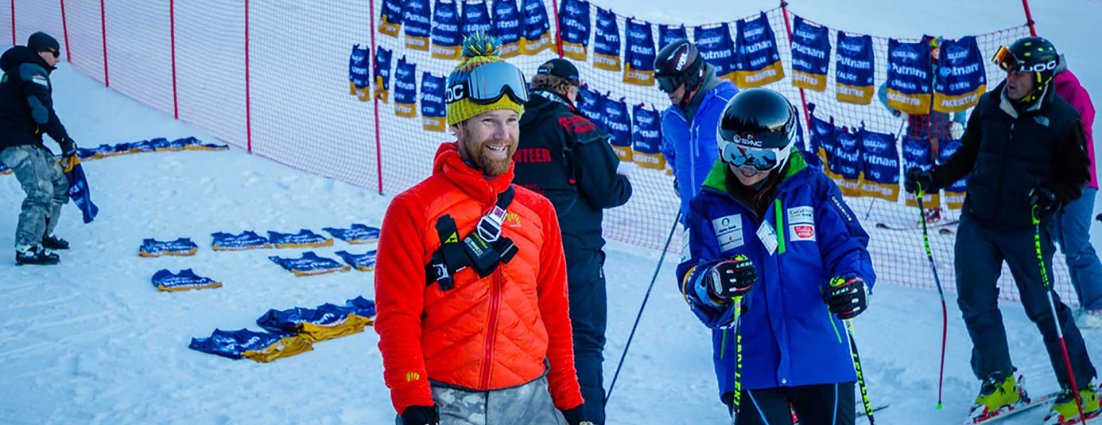Staying Motivated and Healthy All Season Long
02.10.2017 | Jim Taylor

One of the most important ideas I emphasize in my work with racers is consistency. In fact, it’s consistency that makes the great professional racers, like Mikaela Shiffrin and Ted Ligety, so great. Day in and day out, week in and week out, month in and month out, and year in and year out, they are able to ski their best and put up outstanding results.
Consistency is particularly hard during the long and exhausting season. Travel, cold weather, training, a lot of races to get to, and having to balance work can just plain wear you down. That’s why effective race management and rest are two of the most important things you need to do to help you maintain a high level of skiing from the start of your season as early as November to its conclusion as late as April.
Season-long Race Management
One of the most difficult tasks for you, from the beginner level to the professionals, is seeing that you develop in a consistent and progressive manner. This process involves many decisions such as what is the appropriate level of off-season physical training, how much gate training you need, and how often you should race to reach your ski racing goals.
Don’t Race too Much
Racing too much can cause fatigue, produce burnout, and, as demonstrated above, result in injury and illness. This is especially important because most of the important races are at the end of the year (NASTAR Nationals is just around the corner). It is all too common for racers to say “I can’t wait for these races to be over with” or “The season is almost over, great”. This is not a good attitude to have entering key races late in the season. Rather, you want to maintain your attitude, motivation, and health to ski your best to the very end of the season.
The Importance Of Rest
Rest is perhaps the most under-rated training tool at your disposal. It is an absolutely critical part of any effective training program, yet it is often over-looked by racers and coaches alike. A common mentality that has emerged from the “nose to the grind” attitude is that more is better, for example, if six runs of training are good, ten will be better.
Many racers are conditioned to believe that not training is a sign of weakness. Typical fears about rest held by racers (and some coaches) include “I will lose my timing”, “I will forget how to ski”, and “I am lazy if I don’t train”. Yet, as exercise physiologists have demonstrated, rest following a period of training is the time when the actual physical gains are made. This is when the body, which has been broken down from training, can repair and build itself beyond its previous level.
Rest as part of training and competition. Rest is as important to competitive preparation as physical, technical, and mental training. Rest influences every aspect of your skiing: (1) over-all health (fatigue, illness, injury); (2) physical condition (strength, flexibility, endurance); (3) mental state (confidence, anxiety, concentration, motivation); (4) ability to handle pressure; and (5) enjoyment in training and races.
In addition to the wear-and-tear of training, the pressure of regular racing schedule and daily stressors unrelated to ski racing can also wear you down. Regular rest guards against the accumulated long-term effects of the grind of the race season. Even if you don’t feel tired, it doesn’t mean you don’t need rest.
Warning signs. There three clear symptoms of the need for rest that you should watch for. First, you are always tired, yawning a lot, wanting to fall asleep while driving, and dragging to train gates. Second, a loss of enjoyment, interest, and motivation to train is a sure sign of the need for rest. Third, lingering illness and injury that won’t quite go away suggests that the body does not have sufficient resources to repair itself at its current pace.
Incorporate rest into training. You must make rest a regular part of your training regimen. This can be accomplished in several ways. Mandatory rest days can be scheduled once a week. The Monday after a weekend of races is common. The intensity of training should also be varied depending upon the time of season, the upcoming race schedule, and how you are feeling. This process, called periodization, is the well-established trend in training.
I also recommend that you take extra days off following a stressful period of training or racing. For example, following a race series of six races in eight days, you shouldn’t train for up to three days. Coaches, if necessary, should force their athletes to rest even if they don’t want to. Finally, you should plan up to five days off about three weeks before a major race series or end of the season races. This will ensure that you are fresh and fired up for these races.
Finally, one of the most important lessons you can learn is to listen to your body. Your body is very good at telling you when you need to rest. The most difficult thing is for you to listen and do what your body is telling you.